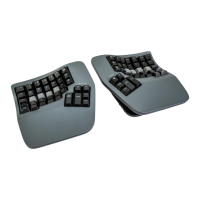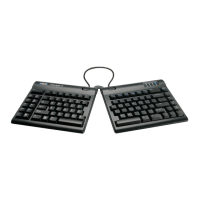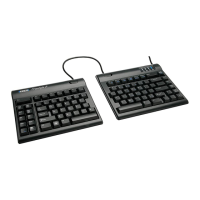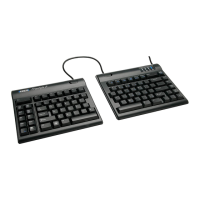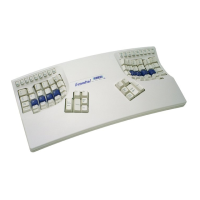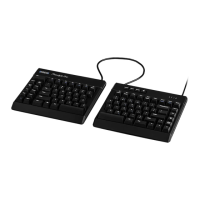16
Shift, Ctrl, Alt, and Windows/Command).
Notes: Left and right modifier keys are treated separately in triggering macros. The default layer shifting keys
cannot trigger a macro via onboard programming, but can trigger a macro via the SmartSet App.
The key action is the trigger
Unlike on previous Advantage keyboards, the macro trigger key is represented by the trigger action, not the
physical position key to give users more flexibility in assignment and playback. For example, if you record a
macro to be triggered by the “Z” key, that macro will fire anytime you tap a key that has the Z action assigned.
Size limits on macros
Individual macros typically can comprise up ~300 individual keystrokes and dozens of macros can be saved
each Profile. Once you reach the macro size limit, the keyboard will stop recording.
Recording a Macro
To program a macro, open the application in which the macro will play correctly, then follow the steps below.
1. Hold SmartSet briefly while tapping Hotkey 2 to enter “Macro Mode.” The LEDs will flash rapidly.
2. Tap the “macro trigger” key or key combination. If you use a combination, hold the modifier(s) first, then
press the trigger key, then release all keys. The LEDs will now flash slowly.
3. Type your macro contents.
4. When you are finished recording your macro, tap SmartSet to exit Program Macro Mode.
Note: When recording a macro any remapping you have done will be active, but you cannot “daisy chain” or
embed one macro within another.
Every keystroke is recorded
As you record a macro, the Advantage360 records the exact keystrokes you type. If you a make mistake
while recording a macro, you can use corrective keystrokes, but this will slow playback slightly and for long
macros, it may also reduce the maximum macro size to below 300 characters. So if you make lots of
mistakes while recording a macro, consider re-starting the recording process. Alternatively, you can edit a
“sloppy” macro in the SmartSet App.
Playback speed and performance
Macro recording only logs the key strokes not timing. By default, the macro will play back at an “average”
speed with no delays between keystrokes, but the playback speed can be customized in the SmartSet. All
computers respond differently to macros so complex macros may require some fine tuning.
Erasing a macro
To erase a macro simply enter Macro Mode in the corresponding Profile, press the corresponding trigger key
(s) for the macro you wish to erase, and then tap the SmartSet Key again to clear the macro from that Profile.
Other keystrokes are not blocked during macro playback
While a macro is being played back the keyboard can still send key strokes that will interrupt playback. If you
are using especially long macros or want to execute a macro in rapid succession with other keystrokes, we
recommend increasing your macro playback speed.
Using Windows as co-trigger
Because of the special way in which the “Windows Key” is treated by the Windows operating system and
differences between processor speed and Windows versions, experimenting with playback speed may be
needed if you use lwin or rwin as the only modifier to help trigger a macro in combination with a non-modifier
key. There should be no problem if Win plus another modifier are combined with a macro trigger key.
Macros take priority
If macro is assigned to a single trigger, macro playback will take priority over the underlying key action.
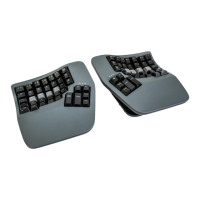
